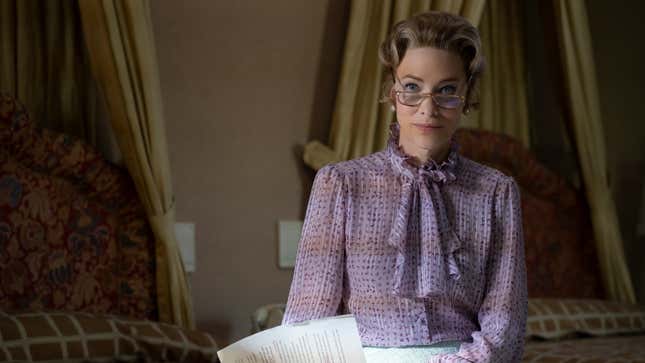

There’s a moment in Hulu’s new drama Mrs. America when feminist activist and future U.S. Representative Bella Abzug, played by a salty Margo Martindale, stumbles upon a group of women from the STOP ERA campaign. Clutching their “BELLA GO HOME” signs in the absence of their conservative queen bee Phyllis Schlafly, the bread-baking housewives of the grassroots campaign proudly tell Abzug that they don’t want to be working girls.
“Has she taught you how to lobby legislators?” Abzug asks, regarding Schlafly’s holy wisdom. “Has she taught you how to draft a press release, a speech? How to answer reporters’ questions, give a television interview?” She’s done all of that, the STOP ERA women say, beaming. “Congratulations, you’re working girls,” Abzug says with a smirk.
If there’s one message to take away from Mrs. America, it’s that the women of STOP ERA were working activists in their own right, ones who shouldn’t have been underestimated by a growing feminist establishment in America during the 1970s. The series takes a sweeping, sometimes scattered view of feminist activism and leaders in this era, from Shirley Chisholm’s (Uzo Aduba) groundbreaking presidential campaign as the first black woman candidate to staff meetings at the Ms. Magazine under Gloria Steinem (Rose Byrne) whose fame as a pretty, well-spoken figurehead for the movement had reached rockstar status. But the show’s leading lady isn’t a feminist at all, rather it’s feminism’s biggest bogeyman, Phyllis Schlafly, played with a chilling frigidity by Cate Blanchett in a role that will certainly earn her an Emmy.
-

-

-

-

-

-

-

-

-

-

-

-

-

-

-

-

-

-

-

-

-

-

-

-

-

-

-

-

-

-

-

-

-

-

-

-

-

-

-

-








































